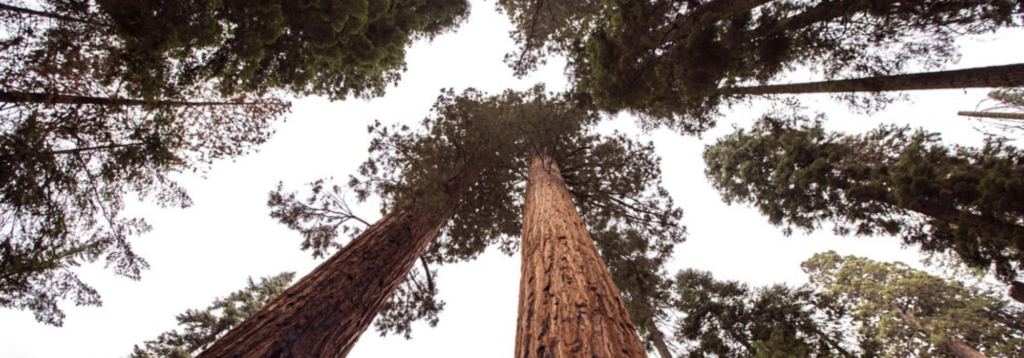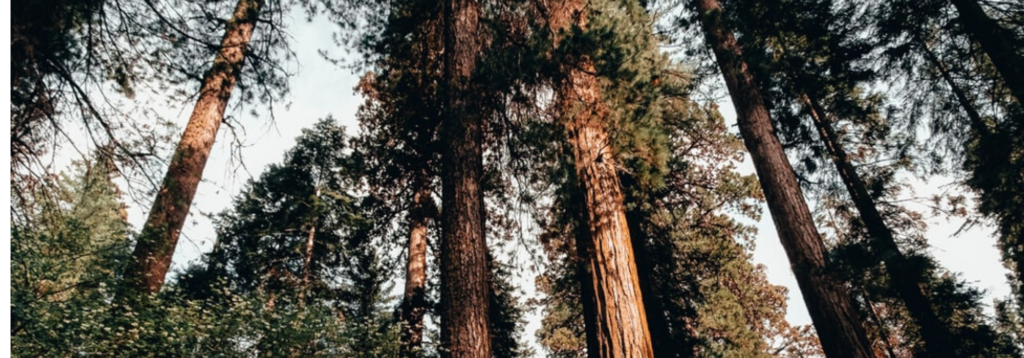PLANT SPECIES
GIANT SEQUOIA
SEQUOIADENDRON GIGANTEUM
Known as the world’s most massive tree, giant sequoias never stop growing and can reach heights of 300 feet and weigh over 600 tons. They are also among the oldest living organisms on earth and can live to be 3,000 years old. Giant sequoias are only found in western Sierra Nevada, California, where they cover 35,620 acres of land.
Giant sequoias used to be found all over North America, but the most recent Ice Age greatly reduced their range. While their natural ecosystem is limited to California, they are popularly grown as ornamental trees in Europe and Australia. Unfortunately, since European settlement, the giant sequoia’s population numbers have been steadily declining.

Why do they matter?
Giant sequoias are not only a marvel to look at, but they are also home to many important species. At least six different species of bats seek shelter in the basal hollows of their trunks created by fire damage. Scientists have also discovered two species of fungus gnats living in giant sequoias, which play a vital role in the forest ecosystem.
The decline of the giant sequoia shows that climate change can take down even our planet’s largest organisms.
Giant sequoias are built to survive harsh conditions; these trees have fibrous, thick bark with sap that protect them from forest fires, which are very important for clearing brush and dispersing the giant sequoia’s seeds. However, fire suppression policies created over the past few years have caused an increase in brush growth, making it difficult for new sequoias to grow.

Will climate change affect the giant sequoia? Yes.
Fire suppression is not the only problem that giant sequoias are facing. Decreased rainfall threatens growing sequoias, as the growth of their trunks requires a large amount of water. Invasive species are also introducing harmful diseases into the forest. With an already limited range for growth, it is important that we protect what area these trees have left.